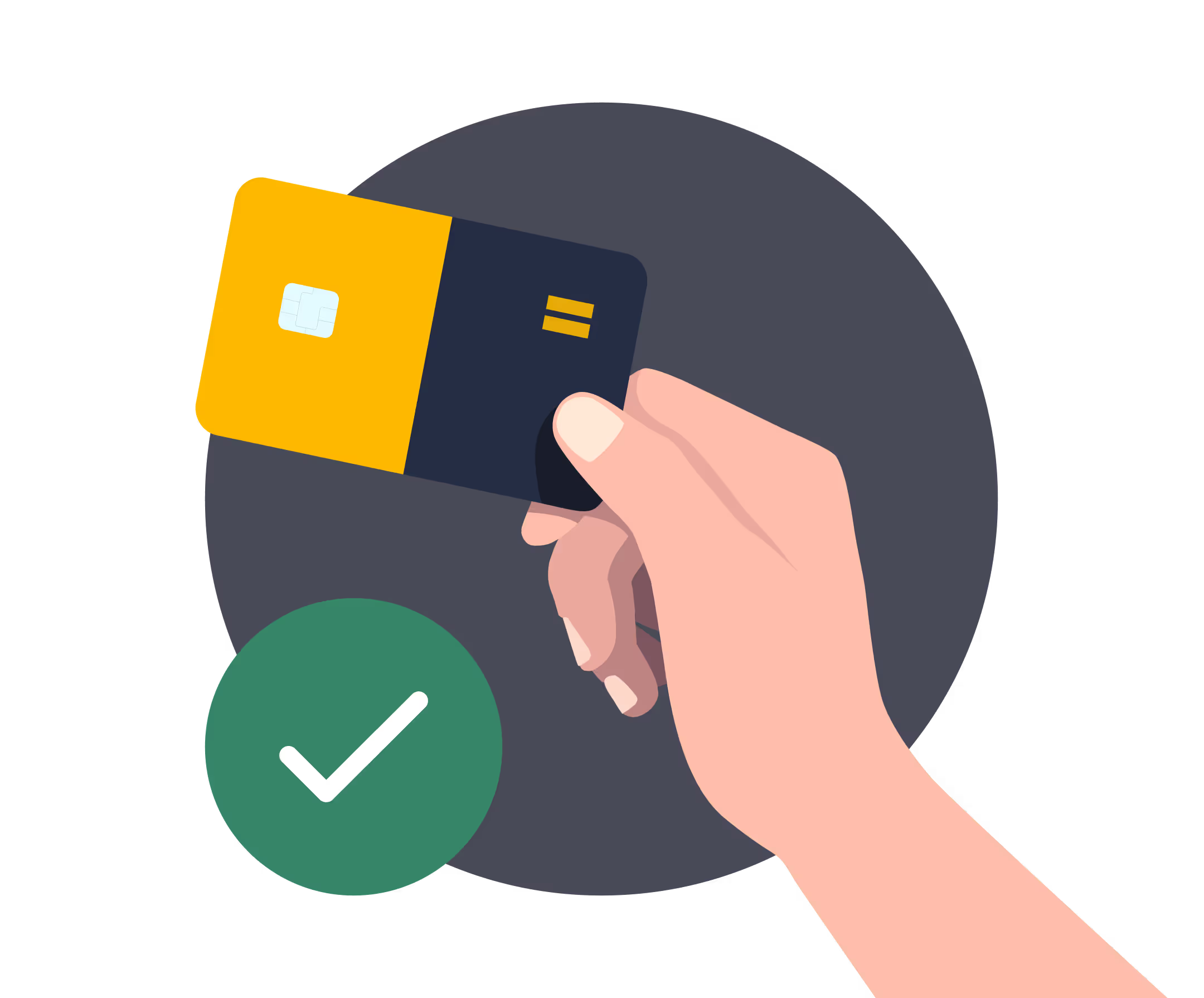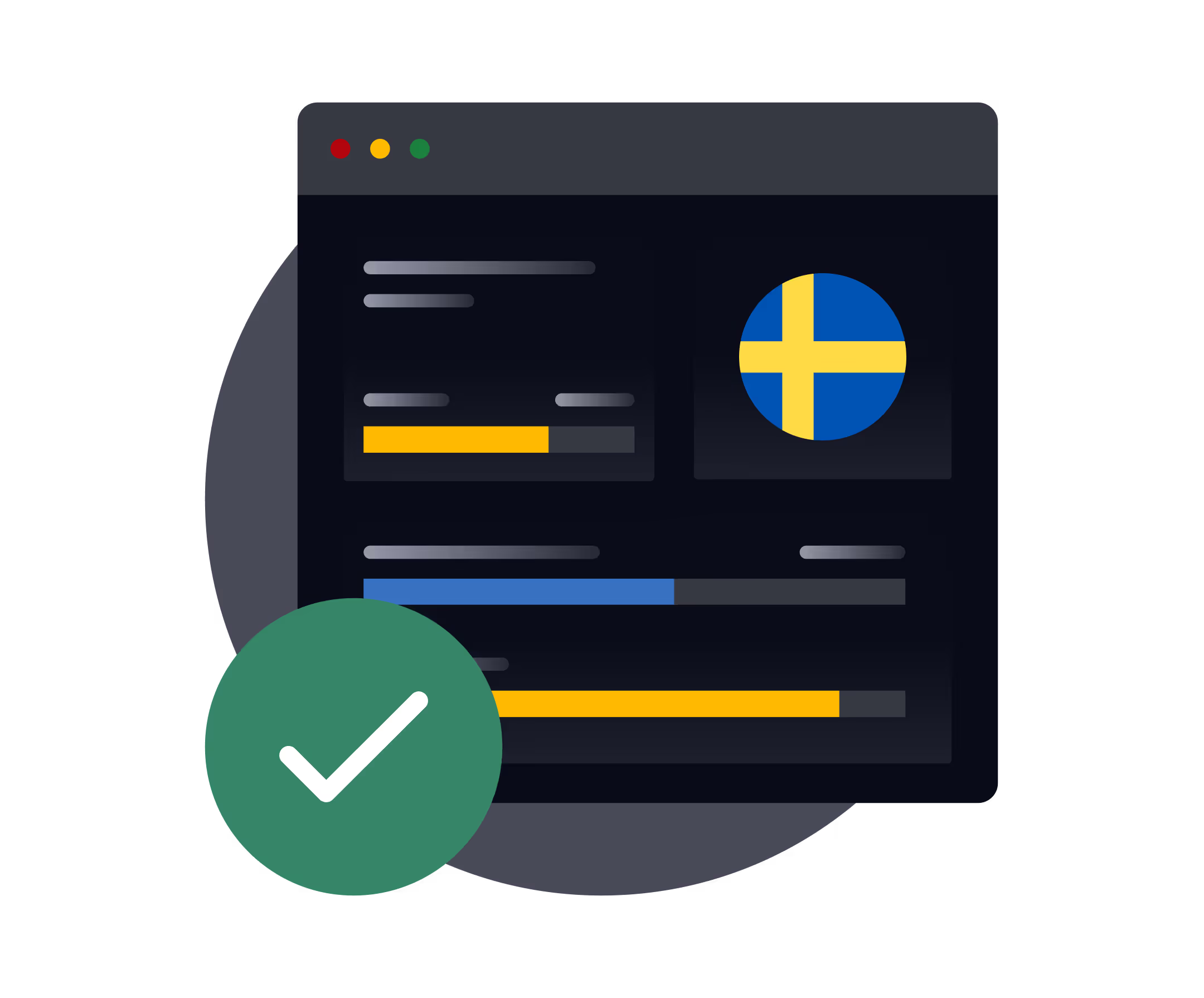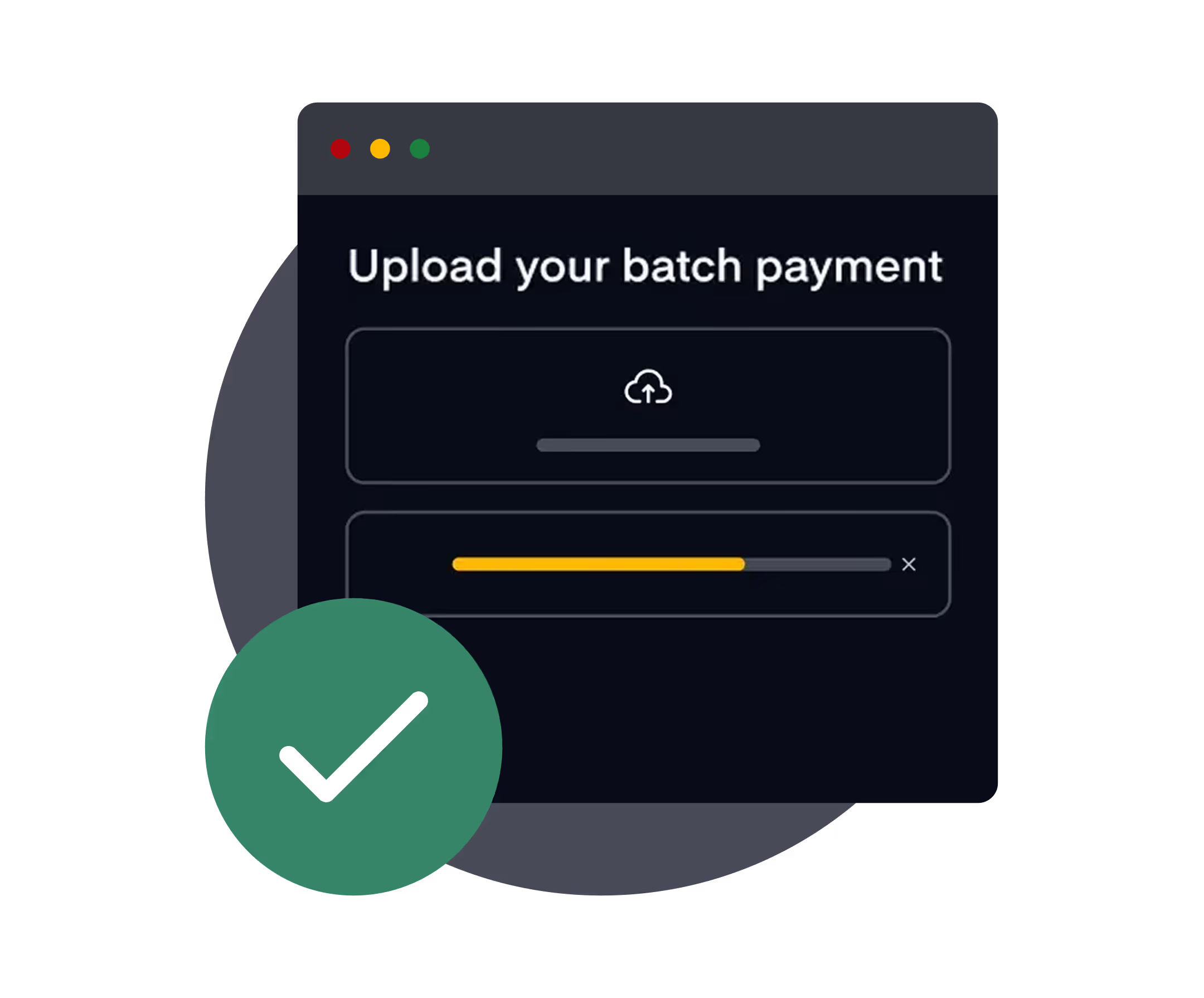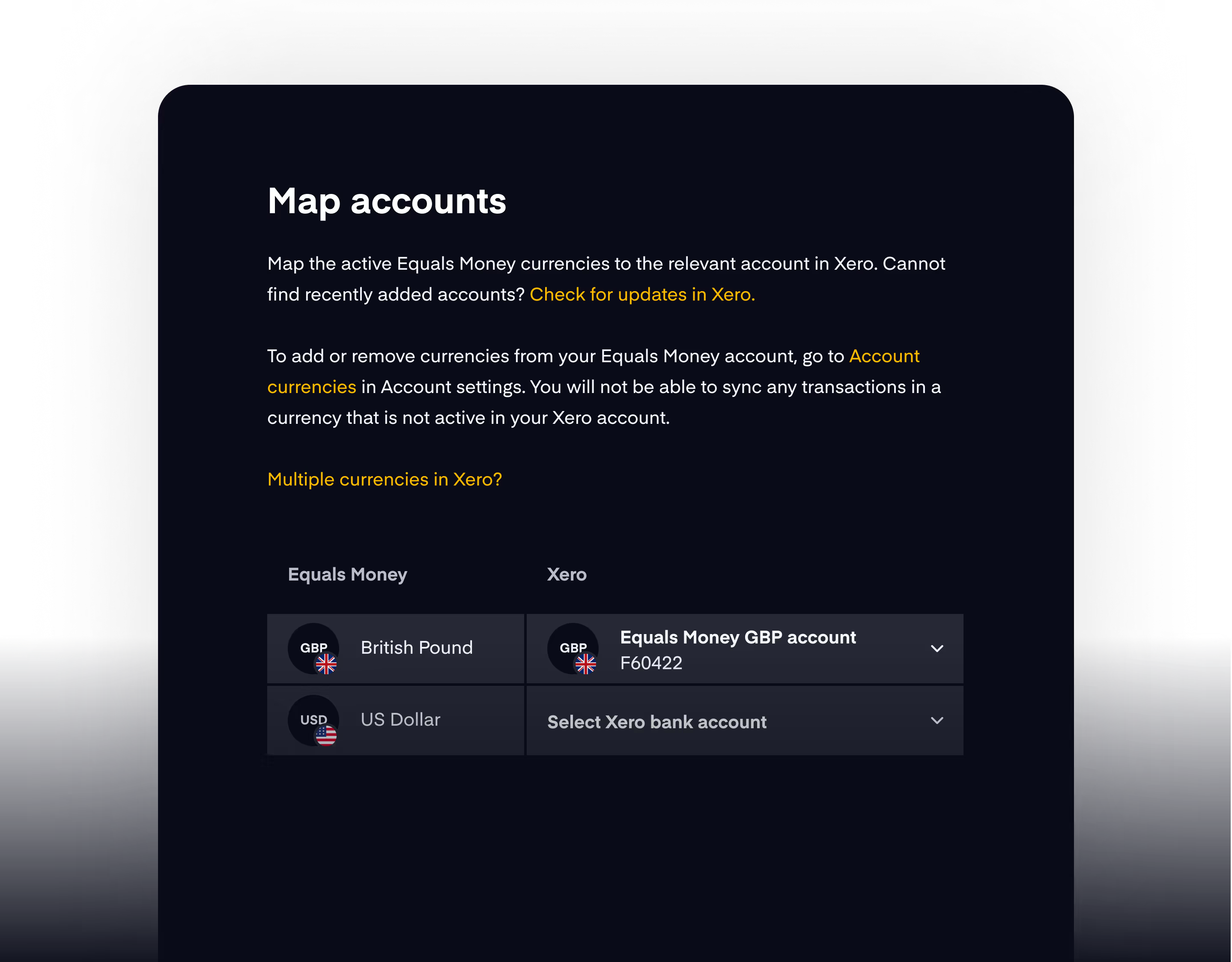SEK
The Swedish krona is the official currency and symbol of Sweden’s financial independence and economic strength.
Used by over 10 million Swedes daily, the krona plays a vital role in everyday life, from buying groceries to paying for digital services. Sweden is part of the European Union but famously voted against adopting the euro in a 2003 referendum, choosing instead to keep the SEK as a cornerstone of its national identity and economic policy.
For investors, tourists, and businesses, understanding the Swedish krona means understanding Sweden’s modern, innovation-driven economy and its deep ties to global trade and finance.
Yes, you can make purchases in SEK using an Equals Money card.
Equals Money cards support 21 global currencies (including SEK), allowing you to make local currency purchases in Sweden. However, your card balance must include the required amount in SEK.

.png)
Yes, you can receive payments in SEK using an Equals Money account.
Equals Money accounts are equipped with a multi-currency IBAN, allowing you to receive payments and manage funds in 38 global currencies (including SEK), without the need for currency conversion.

Yes, you can make payments in SEK using an Equals Money account.
Equals Money allows outbound wire payments in 61 global currencies (including SEK). Read more on how to make an online payment here.
If you're an existing payments customer and do not have access to an online account, please speak to your account manager or get in touch with our team.

Yes, you can make bulk payments in SEK using an Equals Money account.
Equals Money allows bulk (batch) payments in 35 global currencies (including SEK).

Historical context of the Swedish krona
The history of the krona reflects Sweden’s strong commitment to monetary stability.
Before the SEK, Sweden used the Swedish riksdaler, but in 1873 the country joined Denmark and Norway in forming the Scandinavian Monetary Union, which introduced the krona (crown). The union created a common currency system based on the gold standard to make trade easier between the Nordic countries. Although the Scandinavian Monetary Union dissolved in 1914 with the outbreak of World War I, Sweden kept the krona as its national currency.
Over the 20th century, the Swedish krona underwent several important monetary adjustments that shaped its role in both the domestic and global economy. After World War II, Sweden, like many other countries, pegged the SEK to the US dollar as part of the Bretton Woods System, which aimed to stabilise global currencies through fixed exchange rates. This peg helped maintain stable trade relationships and supported Sweden’s post-war economic growth. However, when the Bretton Woods system collapsed in the early 1970s, Sweden shifted to a policy of adjustable pegs against a basket of currencies to better reflect its diverse trading relationships.
In the 1990s, amid a banking crisis and pressures on the fixed exchange rate, Sweden abandoned the fixed peg entirely and moved to a managed float system. This means that today the SEK’s value is determined by market supply and demand, with Sveriges Riksbank (Sweden's central bank) occasionally intervening to maintain price stability and control inflation. This evolution has allowed the SEK to remain resilient and responsive to global economic shifts while supporting Sweden’s reputation for monetary independence.
Despite being an EU (European Union) member since 1995, Sweden has maintained the Swedish krona (voting against adopting the euro in 2003), reflecting the population’s preference for monetary sovereignty and stable domestic control over inflation and interest rates.
Currency symbol
Sweden's currency symbol is “kr,” which stands for krona in Swedish, meaning “crown.”
This symbol is simple yet distinctive and is always written after the numerical amount, for example, 250 kr.
In everyday Swedish life, prices in shops, restaurants, and online stores are shown with “kr” to indicate Swedish kronor. When referring to larger sums, Swedes sometimes drop the “kr” informally, but the official symbol remains widely used in financial documents, receipts, invoices, and price tags.
When writing for a global audience, the kr symbol is often paired with the SEK code to ensure clarity, especially for larger transactions, cross-border payments, international money transfers, or market analysis — for example, SEK 500 kr. This pairing helps distinguish the Swedish krona from other Nordic currencies that also use the “kr” symbol, like the Norwegian krone (NOK) or Danish krone (DKK).
ISO code
The international ISO currency code for the Sweden's currency is SEK, which stands for Svenska Enkrona or simply “Swedish crown.”
This three-letter code is the global standard for identifying the Swedish krona in international transfers and banking, forex trading, and currency exchange. Whenever you exchange money, buy SEK or financial instruments on a forex platform, or see financial news updates, the code SEK will appear.
The ISO 4217 code system is essential for avoiding confusion when making large transfers between countries that use similar currency names like “krona” or “krone.”
Central bank
SEK is issued, regulated, and maintained by Sveriges Riksbank (often just referred to as the Riksbank), Sweden’s central bank.
Founded in 1668, Riksbank is the world’s oldest central bank still in operation. Its mission is to ensure that the SEK remains stable, secure, and trusted by citizens and investors alike.
The Riksbank sets Sweden’s key interest rate, manages inflation targets (currently around 2%), oversees the circulation of banknotes and coins, and works to promote a secure and efficient payment system. Through monetary policy, the Riksbank plays a crucial role in defending the value and credibility of the Swedish krona both domestically and on the global stage.
The possibility of an e-krona
Additionally, in recent years, the Riksbank has also explored the possibility of launching a digital version of the SEK, known as the e-krona, to keep pace with Sweden’s fast-moving shift toward a cashless society. An e-krona would be a central bank digital currency (CBDC), complementing cash and the existing SEK rather than replacing it entirely. The goal is to maintain trust in the Swedish payment system, offer a reliable alternative to private digital payment solutions, and strengthen the resilience of Sweden’s monetary system.
Pilot projects and tests are ongoing, and although a final decision has not yet been made, the e-krona could become one of the first fully functional digital versions of a traditional national currency. If launched, it would position the Swedish krona profile at the forefront of the future of money, setting an example for other countries considering their own central bank digital currencies.
Denominations
The SEK is available in a range of coins and banknotes that reflect Sweden’s practical, modern design ethos:
- Swedish coins include denominations of 1 krona, 2 kronor, 5 kronor, and 10 kronor.
- Banknotes come in values of 20, 50, 100, 200, 500, and 1,000 kronor.
Each banknote features famous Swedes who have contributed to the nation’s culture, arts, or history — for example, the 20-krona note features the beloved children’s author Astrid Lindgren, while the 500-krona note features opera singer Birgit Nilsson.
Coins and notes also include advanced security features like holograms, microtext, and watermarks to combat counterfeiting. Although Sweden is moving towards becoming a cashless society, SEK coins and notes remain an important part of daily transactions for those who prefer physical currency.
Currency unit and subunit
Traditionally, the Swedish krona was divided into 100 öre, with the öre serving as the krona’s subunit and smallest currency unit (similar to other foreign currencies, such as cents for the dollar or pence for the pound).
In the past, coins in denominations like 50 öre were common, but due to inflation and the cost of minting small coins, all öre coins were phased out by 2010. Despite this, the öre still exists for pricing and accounting purposes, especially in electronic payments and retail receipts where prices can include öre fractions and are then rounded to the nearest whole krona for cash payments.
Official name and common nicknames
The official name of the Swedish currency is krona (plural: kronor), which translates to “crown” in English — a name shared with other Nordic currencies that symbolise the region’s historic monarchies.
While SEK is the formal international abbreviation, locals often use casual nicknames. For example, many Swedes refer to the krona informally as “spänn” — a slang term equivalent to “bucks” in English.
Coins are sometimes nicknamed too; for example, the 10-krona coin might be called a “tiokrona.” This mix of formal and informal naming shows how deeply the Swedish krona is woven into everyday Swedish culture and conversation.
Common SEK forex trading pairs
The Swedish krona often appears in global currency rankings due to Sweden’s stable economy and strong export sector. Investors and traders watch currency rankings closely to see how the SEK compares to other major world currencies.
Traders often use the Swedish krona to hedge or speculate with financial instruments and currency tools on the strength of the Nordic and broader European economies.
Some of the most commonly traded SEK pairs include:
- EUR/SEK (euro/ Swedish krona), which reflects the relationship between Sweden and the eurozone
- USD/SEK (US dollar/ Swedish krona), a major benchmark for international investors
- GBP/SEK (British pound sterling/ Swedish krona), which is popular among traders interested in European cross-currency flows
The SEK is considered a relatively stable but moderately volatile currency, making it attractive for traders who want to diversify their exposure and FX risk management within European markets.
Frequently asked questions (FAQs)
Will Sweden use the euro?
No — Sweden does not currently use the euro and there are no immediate plans to adopt it. Although Sweden is a member of the European Union, it has kept the Swedish currency, the SEK, after a national referendum in 2003 where the majority voted to keep the Swedish krona instead of switching to the euro. Today, the SEK remains an important symbol of Sweden’s independent monetary policy and strong economy.
What is the Swedish currency called?
The official Swedish currency is called the krona, which means “crown” in Swedish. The plural form is kronor. It is recognised internationally by the ISO code SEK. The krona is used for all payments in Sweden, from daily shopping to large international transactions.
What does SEK mean?
SEK is the standard international currency code for the Swedish currency — the Swedish krona. It comes from the Swedish words Svenska Enkrona, which translates to “Swedish crown.” You’ll see SEK used in foreign exchange markets, exchange rates , international transfers, currency converters, and financial news when referring to the Swedish krona.
Which country is SEK?
SEK is the currency code used for Sweden. If you see exchange rates or prices listed in SEK, it means they’re in Swedish currency — the krona. The Swedish krona is used exclusively in Sweden and is issued by the country’s central bank, Sveriges Riksbank.
















